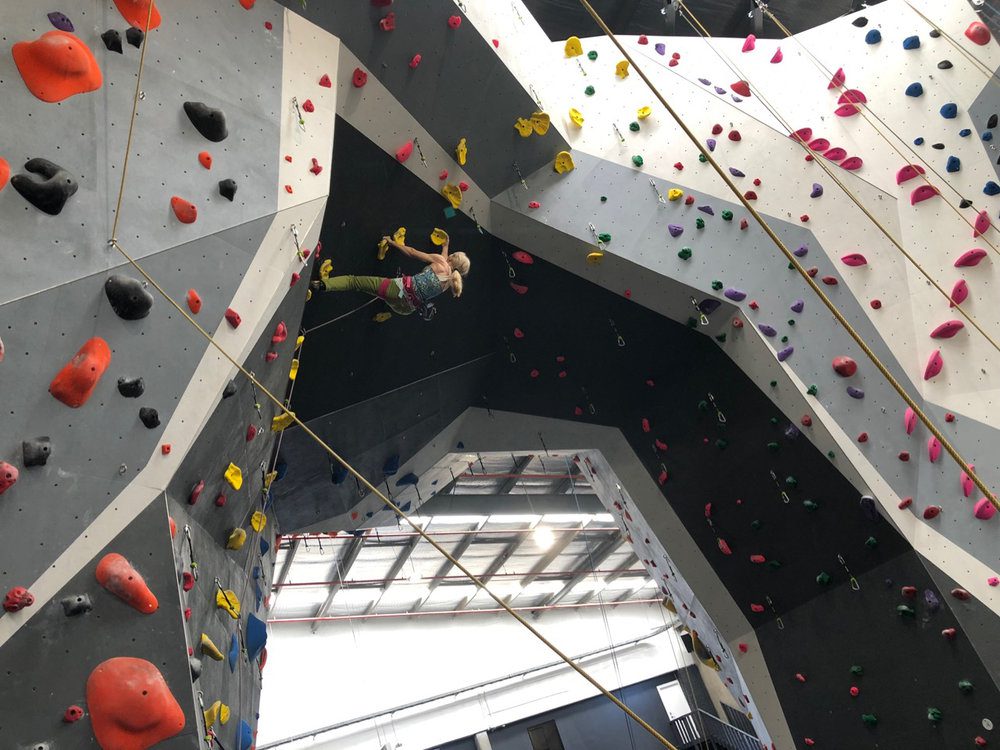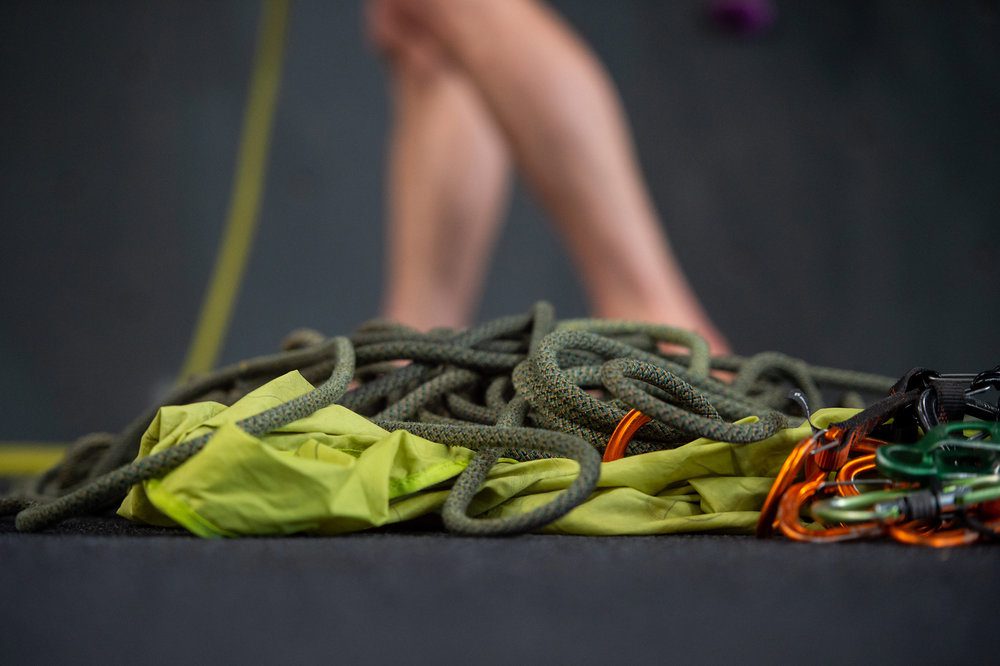
Lead climbing is a rock climbing technique that involves periodically attaching protection to the face of your route to clip into it, with your belayer giving rope as you progress up the climb.
While a more familiar climbing technique often uses a top rope attached at the top of the route, it's not always possible or practical. Instead, the rope runs directly from the belayer to the climber with lead climbing. So basically, all the ropes and equipment start at the bottom.
Lead climbing can be exciting and exhilarating, but it can also be hard work physically and mentally. A lot of awareness and responsibility for safety needs to happen. If you're interested in lead climbing, plenty of practice can help you to learn. Grab a climbing partner or two and head to Climbfit Kirrawee, and try out these tips to start with the lead climbing basics.
When learning to lead, one of the things that you need to be able to do is develop proper clipping techniques. There are lots of strategies for clipping that can help you to improve your performance. For example, you should be clipping when you are stable and ready to clip. That means you've got your feet in a good position, your body in a comfortable posture, doing it with a straight arm as much as you can so that your muscles aren't under unnecessary load. There are many hand styles for clipping, so find what feels right to you, but don't forget to give fair practice to both hands!
When you first start working on the techniques of lead climbing, you shouldn't dive straight into "live" lead climbing. A great way to work on the different skills such as clipping is to use a top rope anchor system with a belayer (or auto-belay) and a mock lead rope tail to practise. This offers you extra safety and stability so that you can feel more confident while you're learning the techniques.
You won't have a fear of falling, and you can make sure that you're safe, especially when practising in a climbing gym. Top roping gives you the chance to feel more comfortable clipping into the quickdraws before taking a lead check.
Another skill to learn if you want to take up lead climbing is lead belaying. This is another skill that you can practise by having the climber on lead belay, with a backup top rope, also attached. When you do this, a third person is needed for the top rope belay element.
The practising lead belayer can then treat the climber as "live" on belay, and engage in all the proper techniques of lead belaying, knowing that a backup top rope will step in if ever needed. When belaying on the support top rope, be careful not to feed out too much slack. A small curve of slack is usually what you're looking for so that the lead climber and belayer are treating their primary system with intent.
Excellent communication is vital when you're learning lead climbing. Whether you're at your local climbing venue or you're outdoors, climbers and belayers need to share the responsibility of communicating with each other.
Before you get onto any climbing walls, you should check each other's gear, and make sure that you're both 100% ready to go. Communication between the climber and belayer needs to be clear and concise. Whether the climber needs more rope, or that they want rope taken in is an essential line of communication to be recognised and reacted to quickly. The belayer should let the climber know if they make any mistakes or problems with the system so that the climber doesn't keep climbing unaware of a potential hazard.

The right gear is essential when you're climbing. Lead climbing gear grows your sport climbing kit and includes several essential elements.
For sport climbing, you will at least need;
quickdraws
Belay device
Dynamic Rope
gear for building anchors
If you expand your climbing skills further and trad climb (non-bolted routes) your trad gear (trad rack) will involve a library of removable gear like nuts and cams to be placed in cracks/slots in the rockface. Having the correct equipment requires the knowledge to be used correctly and to be a more complete lead climber, such as building and cleaning a balanced anchor, or having to ascend up a rope if needed.
Whenever you learn a new climbing skill, you can always benefit from instruction from someone who really knows what they're doing.
Climbfit Kirrawee runs an introduction to lead climbing course lead by the Australian School of Mountaineering and is run over 2 nights. You can find out more about the course and book in here
At Climb Fit Kirrawee, we will issue you with a lead pass to our gym if you can correctly demonstrate your lead climbing skills. We have an expanding number of interchangeable lead routes, some over 15 metres long, to keep things interesting for our members and visitors.
A range of grades on an array of vertical and roof climbing routes, along with the ability to practice your skills on the simulated lead walls with top ropes in place. Our staff are always happy to share their expert knowledge with you!